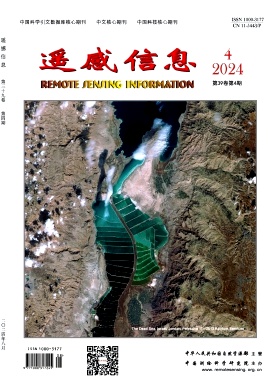Earthquake-Induced Landslide Susceptibility Analysis :The Effect of DEM Resolution
引用次数: 2
Abstract
This paper study the effect of the Digital Elevation Model (DEM) data parameters ( type, source, and resolution) on a slope unit and landslide susceptibility analysis using Geographic Information System (GIS). The Landslide susceptibility analysis and slope unit delineation is done using six DEM data from three different sources (Bige Map, SRTM, and Wietu) at varying resolutions and pixel sizes. The Frequency Ratio Method is then used to analyze Ghana’s susceptibility to seismic landslides whiles; a pseudo-static critical slip method (Factor of safety method) is used to check the accuracy and also indicate the specific slopes to fail at specific seismic loading. The research aimed to achieve the goal since the method allowed for the attainment of an optimum slope unit and landslide map for each resolution of data regardless of the source. The procedure permitted and informed a decision making on the best DEM DATA and resolution for slope unit and Landslide analysis. The result showcases a DEM Resolution of 18 and 30 m and pixel 30m*30m size to be the best DEM to be used for landslide susceptibility mapping. The results further prove Bige Map and STRM DEM to give a more precise effect than weitu.地震诱发滑坡易感性分析:DEM分辨率的影响
利用地理信息系统(GIS)研究了数字高程模型(DEM)数据参数(类型、来源和分辨率)对边坡单元和滑坡易感性分析的影响。滑坡易感性分析和边坡单元描绘使用来自三个不同来源(Bige Map, SRTM和Wietu)的六个DEM数据,以不同的分辨率和像素大小完成。然后使用频率比法分析了加纳对地震滑坡的易感性,同时;采用拟静力临界滑移法(安全系数法)来检验精度,并指出在特定地震荷载下的特定破坏边坡。本研究旨在实现这一目标,因为该方法可以在数据的每个分辨率下获得最佳的边坡单元和滑坡图,而不考虑来源。该程序允许并为最佳DEM数据和坡度单元和滑坡分析分辨率的决策提供信息。结果表明,DEM分辨率为18和30m,像素大小为30 *30m,是滑坡易感性制图的最佳DEM。结果进一步证明了bigmap和STRM DEM比微图具有更高的精度。
本文章由计算机程序翻译,如有差异,请以英文原文为准。
求助全文
约1分钟内获得全文
求助全文
来源期刊
自引率
0.00%
发文量
3984
期刊介绍:
Remote Sensing Information is a bimonthly academic journal supervised by the Ministry of Natural Resources of the People's Republic of China and sponsored by China Academy of Surveying and Mapping Science. Since its inception in 1986, it has been one of the authoritative journals in the field of remote sensing in China.In 2014, it was recognised as one of the first batch of national academic journals, and was awarded the honours of Core Journals of China Science Citation Database, Chinese Core Journals, and Core Journals of Science and Technology of China. The journal won the Excellence Award (First Prize) of the National Excellent Surveying, Mapping and Geographic Information Journal Award in 2011 and 2017 respectively.
Remote Sensing Information is dedicated to reporting the cutting-edge theoretical and applied results of remote sensing science and technology, promoting academic exchanges at home and abroad, and promoting the application of remote sensing science and technology and industrial development. The journal adheres to the principles of openness, fairness and professionalism, abides by the anonymous review system of peer experts, and has good social credibility. The main columns include Review, Theoretical Research, Innovative Applications, Special Reports, International News, Famous Experts' Forum, Geographic National Condition Monitoring, etc., covering various fields such as surveying and mapping, forestry, agriculture, geology, meteorology, ocean, environment, national defence and so on.
Remote Sensing Information aims to provide a high-level academic exchange platform for experts and scholars in the field of remote sensing at home and abroad, to enhance academic influence, and to play a role in promoting and supporting the protection of natural resources, green technology innovation, and the construction of ecological civilisation.

 求助内容:
求助内容: 应助结果提醒方式:
应助结果提醒方式:


